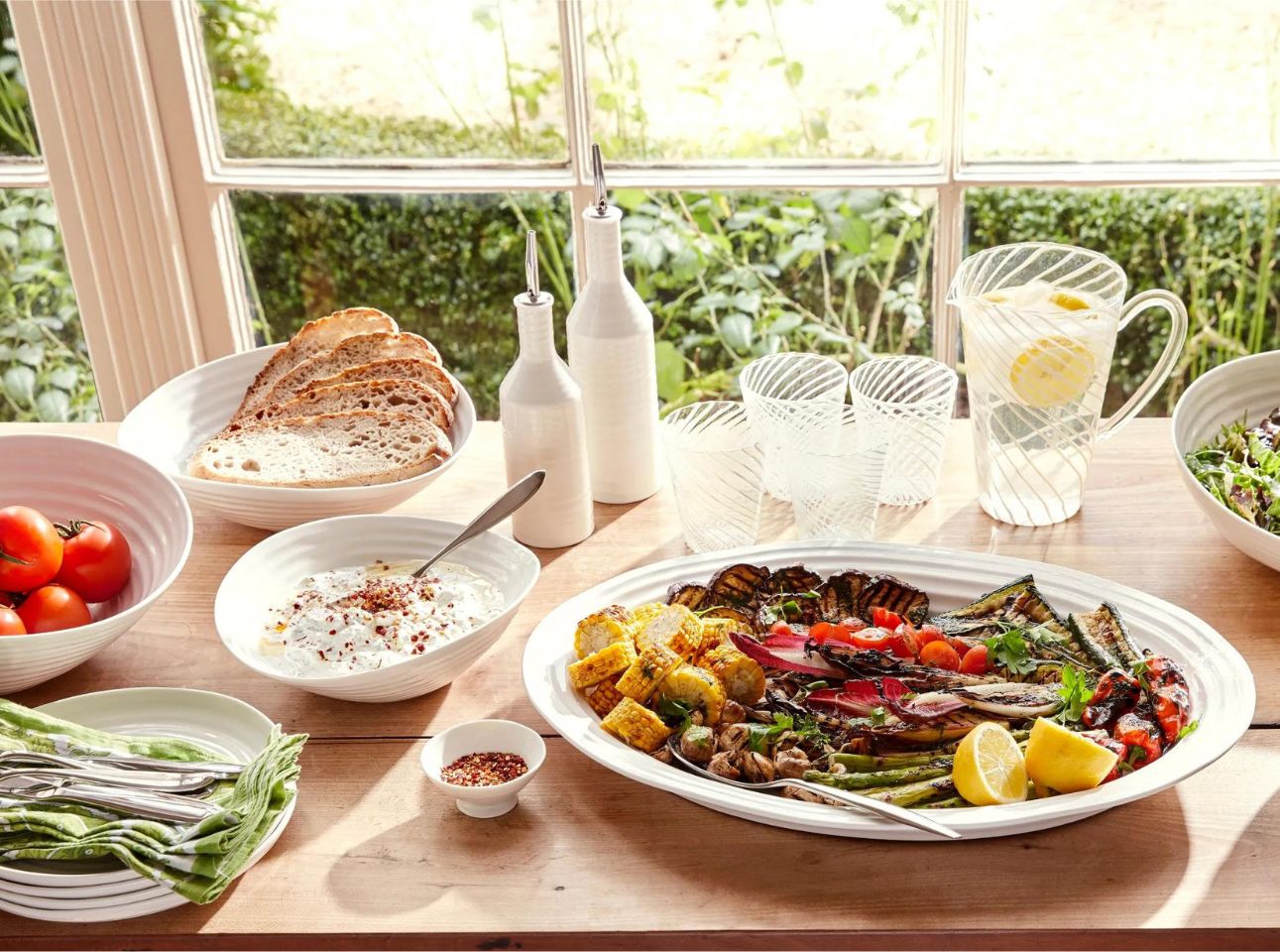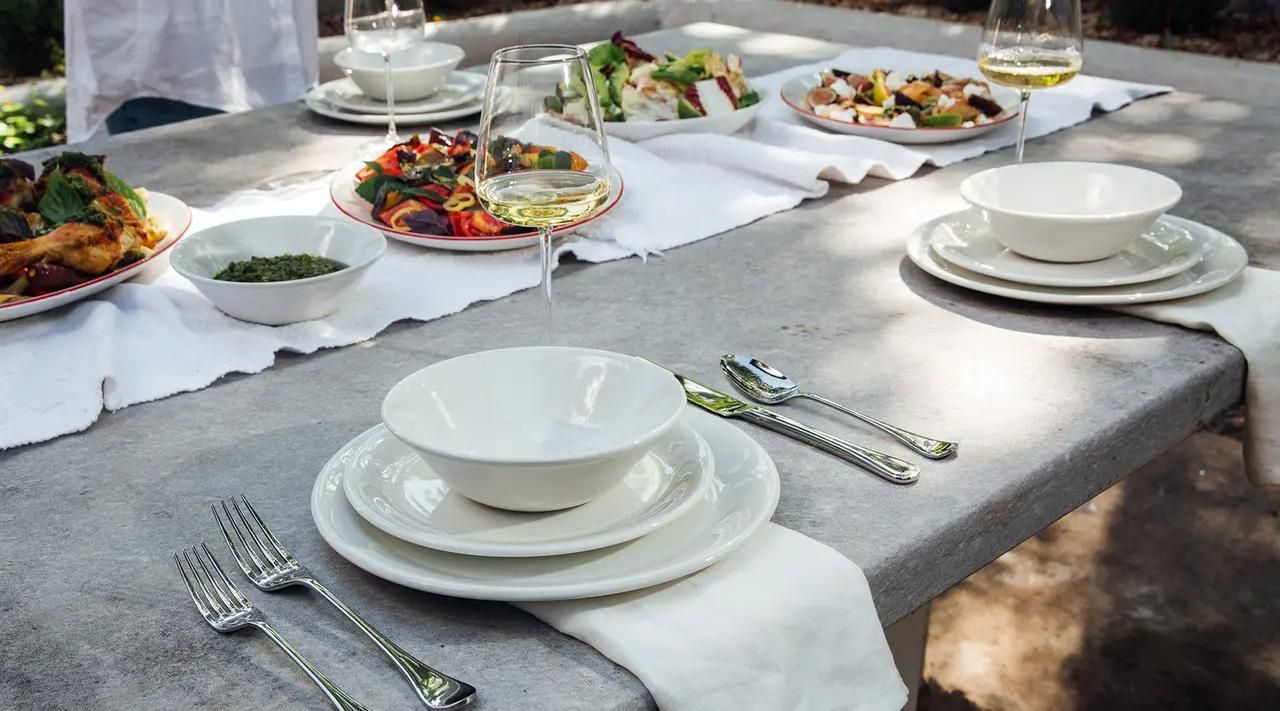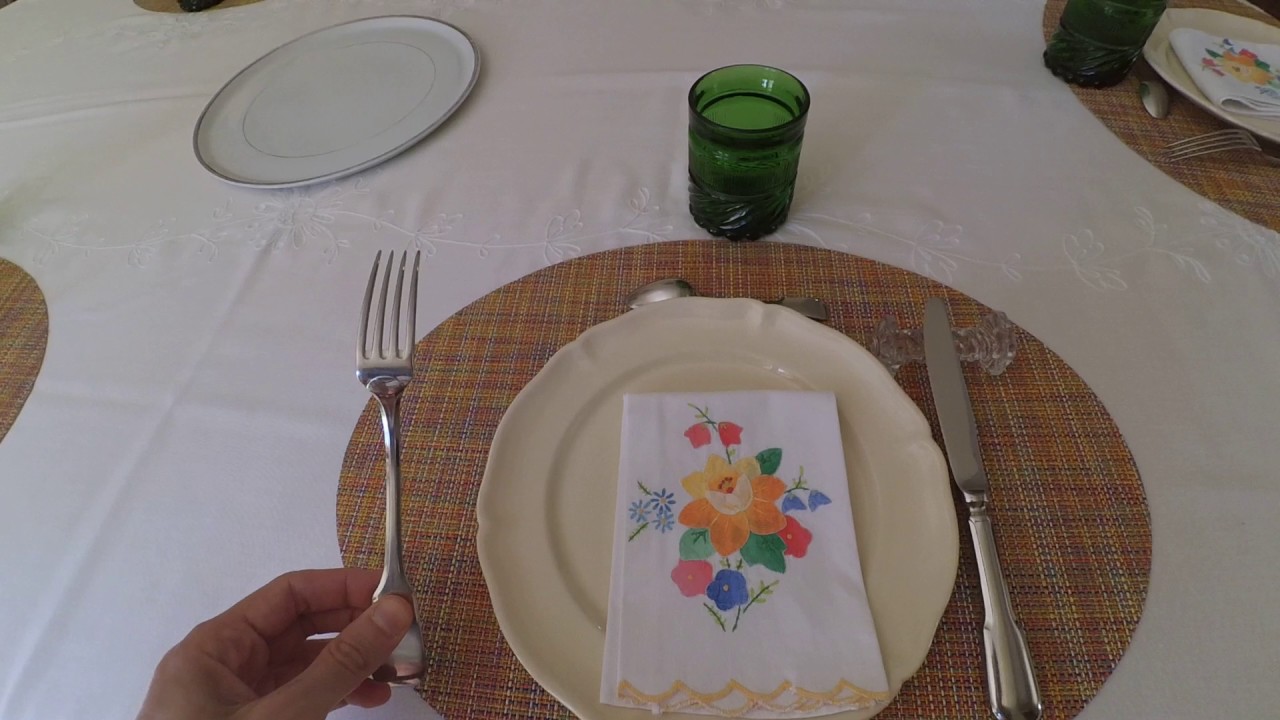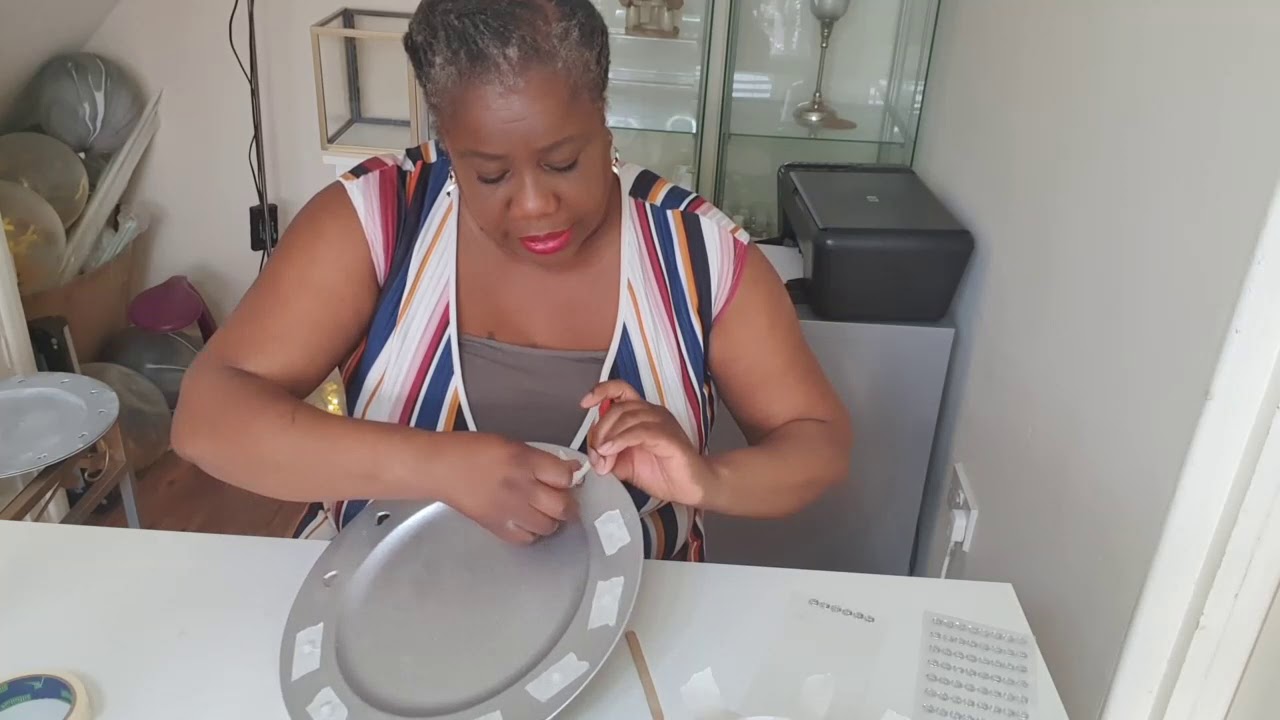Home>Dining>Tableware>Where Does The Salad Plate Go In A Table Setting?


Tableware
Where Does The Salad Plate Go In A Table Setting?
Modified: August 28, 2024
Learn proper table setting etiquette with tableware placement. Discover where the salad plate goes in a table setting and enhance your dining experience.
(Many of the links in this article redirect to a specific reviewed product. Your purchase of these products through affiliate links helps to generate commission for Storables.com, at no extra cost. Learn more)
Introduction
When it comes to table settings, every detail matters – from the arrangement of cutlery to the placement of the plates. A well-set table not only creates an aesthetically pleasing dining experience but also sets the tone for the meal. If you’ve ever wondered where the salad plate goes in a table setting, you’re not alone. The proper placement of the salad plate is crucial for achieving a balanced and elegant table presentation.
Understanding the art of table settings requires knowledge of the different components involved and their specific placements. With the right guidance, you can confidently create a table setting that impresses guests and creates a visually appealing ambiance for any meal.
In this article, we will explore the key components of a table setting and delve into the importance of proper placement. Specifically, we will focus on the placement of the salad plate and the factors to consider when determining its position within the table setting.
So, whether you’re hosting a formal dinner party or simply want to elevate your everyday meals, understanding where the salad plate goes in a table setting is a valuable skill to possess. Let’s dive in and uncover the secrets of perfectly placed tableware!
Key Takeaways:
- Mastering table settings involves understanding the placement of each component, including the salad plate, to create an elegant and visually appealing dining experience.
- Consider the occasion, meal style, table size, and personal preference when determining the placement of the salad plate to harmonize with the overall table setting.
Read more: Where Does The Dessert Plate Go?
Understanding Table Settings
Before we delve into the placement of the salad plate, it’s important to have a solid understanding of table settings as a whole. A well-arranged table not only enhances the dining experience but also reflects your attention to detail and hospitality.
A traditional table setting consists of various components carefully arranged in a systematic manner. These components include plates, cutlery, glassware, napkins, and any additional table decor. The arrangement may differ depending on the occasion and level of formality, but the fundamental principles remain the same.
The main elements of a table setting are typically organized according to logical and visual patterns. For example, the plates and cutlery are usually symmetrically placed, and the glasses align with each other. The overall table setting should have a balanced and cohesive appearance.
Understanding the layout of a table setting is crucial for mastering proper placement. By familiarizing yourself with the different components and their positions, you can create an inviting and visually pleasing arrangement.
Now let’s explore the individual elements that make up a table setting and their specific placements in more detail.
Components of a Table Setting
Creating a perfect table setting involves arranging several components in a strategic and visually appealing manner. Let’s take a closer look at the key components and their specific placements:
- Plates: The foundation of any table setting is the dinner plate. It is typically placed at the center of the individual setting, about an inch from the edge of the table. For a formal setting, a salad plate is often stacked on top of the dinner plate.
- Cutlery: Forks and knives are placed to the left of the plates, while spoons are placed to the right. According to traditional etiquette, the salad fork is positioned to the left of the dinner fork. Knives are placed with the cutting edge facing the plate, and spoons are placed to the right of the knives.
- Glassware: Glasses are placed above the knives and spoons, aligned in a diagonal line from the upper right of the main plate. The water glass is usually the largest and is placed closest to the plate. To the right of the water glass, wine glasses can be arranged based on the type of wine being served.
- Napkins: Napkins can be folded and placed either on top of the dinner plate or to the left of the forks. Alternatively, they can be intricately folded and placed within the water glass for an elegant touch.
- Additional Table Decor: Depending on the occasion, you may choose to add additional table decor such as a centerpiece, candles, or place cards. These elements are typically placed in the middle of the table or at specific spots designated for each guest.
By properly arranging these components, you can create a visually appealing and well-organized table setting that leaves a lasting impression on your guests.
Importance of Proper Placement
Proper placement of tableware in a table setting is not just about aesthetics; it also serves practical and functional purposes. The way you position each element contributes to the overall flow of the meal, enhances guest comfort, and facilitates efficient service. Here are a few reasons why proper placement is important:
- Visual Appeal: A well-arranged table setting creates a visually pleasing and harmonious dining experience. Proper placement ensures that each element is aligned and symmetrical, creating an inviting and elegant ambiance.
- Efficient Service: Proper placement of tableware allows for smooth and efficient service. When plates, cutlery, and glasses are strategically positioned, it becomes easier for servers to navigate and deliver dishes, ensuring that the meal runs seamlessly.
- Guest Comfort: Placing tableware in the correct positions ensures guest comfort and convenience. When diners can easily access their cutlery and glasses without feeling cramped, they can fully enjoy their meal and engage in conversation without any hindrances.
- Etiquette and Tradition: Following proper table setting etiquette is a way to honor tradition and show respect to your guests. It demonstrates your attention to detail and your understanding of social norms, making the dining experience more enjoyable for everyone.
- Enhanced Dining Experience: A properly set table creates an elevated dining experience. When the table setting is thoughtfully arranged, it elevates the perceived value of the meal, making it feel more special and memorable.
By paying attention to the proper placement of tableware, you not only create a visually appealing table setting but also enhance the overall dining experience for yourself and your guests.
The salad plate goes to the left of the dinner plate in a table setting. It should be placed above the forks, about an inch from the edge of the table.
Placement of the Salad Plate in a Table Setting
When it comes to the salad plate, its placement depends on the type of meal you are serving and the formality of the occasion. Here are a few guidelines to help you determine the placement of the salad plate in a table setting:
- Formal Table Setting: In a formal table setting, the salad plate is typically placed on top of the dinner plate. This arrangement creates an elegant and layered look. The salad plate is usually smaller in size and is centered directly on the dinner plate, aligned with the other elements of the table setting.
- Semi-Formal or Casual Table Setting: In a semi-formal or casual table setting, the salad plate may be positioned to the left of the forks. This placement allows for a more relaxed and informal layout, while still maintaining a balanced presentation. The salad plate is aligned with the edge of the table and sits above the forks, with the napkin placed to the left of the forks.
- Buffet-Style Setting: In a buffet-style setting, the salad plate can be placed at the beginning of the buffet table, allowing guests to serve themselves. Alternatively, individual salad plates can be pre-set at each seating, stacked on top of the dinner plate if desired.
Ultimately, the placement of the salad plate should complement the overall aesthetic and functionality of the table setting. Consider the formality of the occasion, the size of the plates, and the desired visual effect when making your decision.
Additionally, remember to provide any necessary utensils, such as a salad fork or tongs, alongside the salad plate to ensure that guests have everything they need to enjoy their meal.
By understanding the appropriate placement of the salad plate, you can create a cohesive and inviting table setting that enhances the dining experience for you and your guests.
Factors to Consider
When determining the placement of the salad plate in a table setting, there are several factors to consider. These factors include the occasion, the style of the meal, the size of the table, and personal preference. Taking these factors into account will help you make informed decisions and create a well-balanced and functional table setting.
- Occasion: The formality of the occasion plays a significant role in determining the placement of the salad plate. For formal events, placing the salad plate on top of the dinner plate creates a more elegant and refined look. For casual or everyday meals, positioning the salad plate to the left of the forks offers a relaxed and informal setting.
- Meal Style: Consider the style of the meal you’re serving. If you’re hosting a sit-down dinner with multiple courses, placing the salad plate on top of the dinner plate keeps the table organized and avoids clutter. On the other hand, if you’re serving a buffet-style meal, placing the salad plate at the beginning of the buffet line allows guests to help themselves.
- Table Size: The size and shape of your table may also influence the placement of the salad plate. If you have a small table or limited space, placing the salad plate on top of the dinner plate can help keep the table more organized and maximize space. For larger tables, you have more flexibility in choosing the placement to achieve the desired aesthetic.
- Personal Preference: Ultimately, personal preference should guide your decision. Consider your own taste and the overall look you want to achieve. Experiment with different placements to see what visually appeals to you and reflects your personal style.
Remember, there are no strict rules when it comes to table settings. While there are traditional guidelines to follow, feel free to adapt and customize the placement of the salad plate to suit your needs and preferences.
By considering these factors, you can ensure that the placement of the salad plate harmonizes with the overall table setting and creates a visually pleasing and functional dining experience.
Conclusion
Mastering the art of table settings is an essential skill for anyone who wants to create a memorable dining experience. The placement of each component, including the salad plate, contributes to the overall visual appeal and functionality of the table setting.
By understanding the different components of a table setting and their specific placements, you can create a balanced and aesthetically pleasing arrangement. Whether you’re hosting a formal dinner party or a casual family gathering, the proper placement of the salad plate adds a touch of elegance and sophistication to your table.
Remember to consider the occasion, the style of the meal, the size of the table, and your personal preference when determining the placement of the salad plate. Adapt the traditional guidelines to suit your needs and create a table setting that reflects your unique style and hospitality.
Now that you have a deeper understanding of where the salad plate goes in a table setting, you can confidently set the table for any occasion. Pay attention to the details, experiment with different placements, and let your creativity shine through.
So, the next time you’re setting the table, take a moment to consider the placement of the salad plate – it may seem like a small detail, but it can make a big difference in creating a memorable dining experience for you and your guests.
Frequently Asked Questions about Where Does The Salad Plate Go In A Table Setting?
Was this page helpful?
At Storables.com, we guarantee accurate and reliable information. Our content, validated by Expert Board Contributors, is crafted following stringent Editorial Policies. We're committed to providing you with well-researched, expert-backed insights for all your informational needs.















0 thoughts on “Where Does The Salad Plate Go In A Table Setting?”